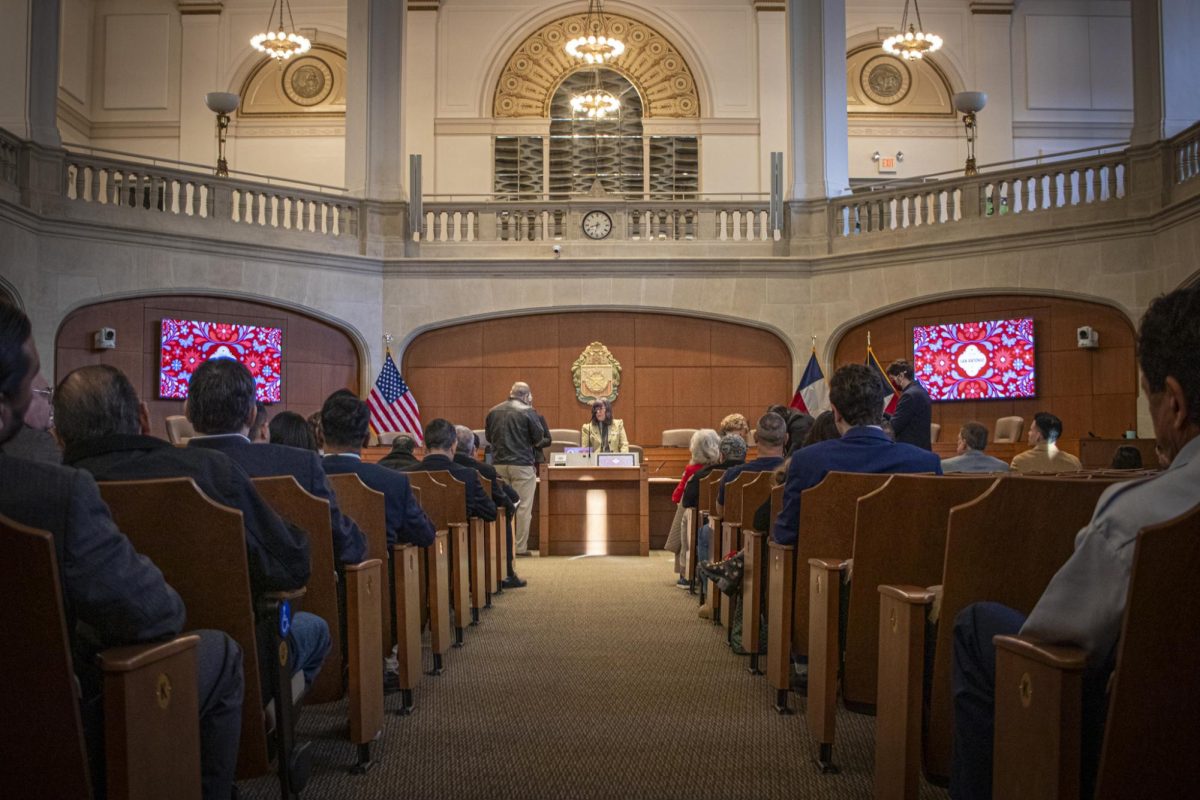_trbs__gallery.jpg)
Marcus Connely, the Paisano
On April 9, The Texas House of Representatives passed House Bill 100, which would authorize funding for construction projects on college campuses across Texas.
Authored by John Zerwas, R-Richmond, HB 100 seeks to approve over $3 billion in tuition revenue bonds (TRBs) as a method for funding construction in higher education with classrooms, laboratories, libraries, academic centers and other critical infrastructure being well-suited to long-term financing.
Essentially, TRBs are a way for a school to receive money from the state for on-campus construction projects and allow the university to pay off the loan once the bonds are sold to the public.
On Feb. 10, William H. McRaven, Chancellor of The University of Texas System, appealed to the Texas Senate Committee citing the growth of the student population as the reason for more laboratory space.
“It’s been almost a decade since the Legislature last provided state funding for classrooms, laboratories, research and clinical care facilities,” McRaven stated. “Since then, the student population of the system has grown over 27,000, and enrollment in the science, technology and engineering classes that require laboratory space has increased by 46 percent.”
At the beginning of the legislative session, UTSA requested $95 million in TRBs to help fund a new Instructional Science and Engineering (ISE) Building and $42.5 million to renovate the 39-year-old Peter Flawn Science Building. According to UTSA Today, the ISE Building would add “175,000 square feet for instructional laboratories and classrooms, STEM education and research and support programs that enhance teaching skills of students preparing for careers in science instruction at K-12 institutions.”
If approved, HB 100 would provide UTSA with up to $70 million for the construction of a new Instructional Science and Engineering Building (ISE Building), $25 million less than the original request, which could affect UTSA’s proposed plan for the ISE Building.
However, not all Texans are on board. Texans for Fiscal Responsibility argued against the bill earlier this month, claiming TRBs “seem like a harmless authorization for a new building” but have since resulted in billions of dollars of debt that the state is responsible for financing.
“I think it’s good we’re expanding,” said senior English major Amalya Hyman. “We’re becoming an accomplished and well known research and technology university. However, as a non-science major who has to park on the same campus, I hope some of that money is allocated to more (parking) space.”
In a proposal presented by UTSA President Ricardo Romo to the UT system’s Board of Regents last July, it was suggested that the ISE Building would also “improve graduation rates and increase undergraduate enrollment” while also replacing 39-year-old class labs.
Some UTSA students questioned the necessity of a new ISE building and felt the TRB funds should be used to improve already existing buildings.
“I do not think it is necessary to build another science building. If I was to use the money for something else, it would be renovating and updating some of the older buildings that the school has,” said sophomore biology major Rebecca Colley.
Colley went on to suggest that the MH building could use bigger rooms to accommodate class sizes, and the JPL could use improvements as well so that students could have “more study room and better wifi connections.”
“I don’t think we need a new ISE building unless for some reason there’s not enough space for science classes,” said senior English major Michaela Hillis. “If I had the money, I think I’d renovate the Art Building because it feels very out of date.”
Senior English major Chelsea Robertson agreed: “I feel like there is no need to construct a new science building. The Peter Flawn Science building is perfectly fine.”
Robertson, like Hillis, also felt the Art Building could use a renovation. “Honestly, I would like for there to be a focus on bringing theater and drama to UTSA. Perhaps renovating the Art Building, where there can be a section for theater. I understand that would require hiring more professors, creating a theater program, and adding more theater-related classes to the curriculum, but imagine how much more flavor could be added to UTSA’s melting pot of education.”






